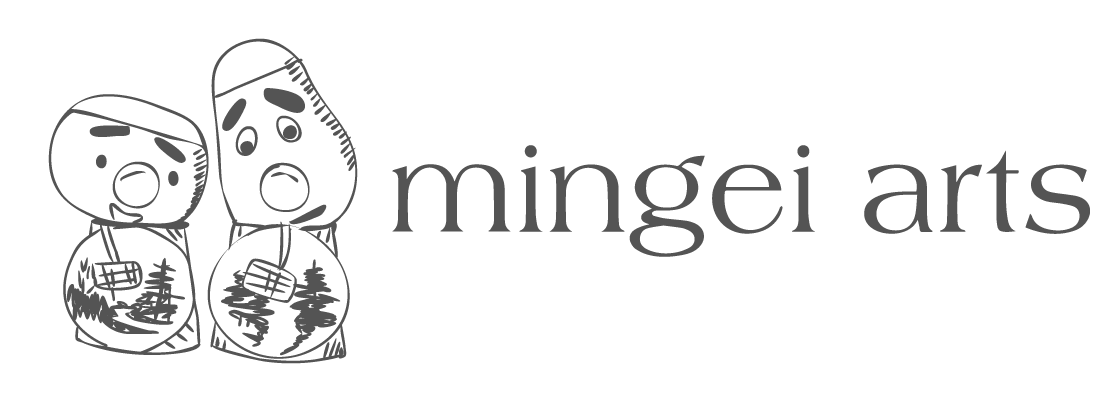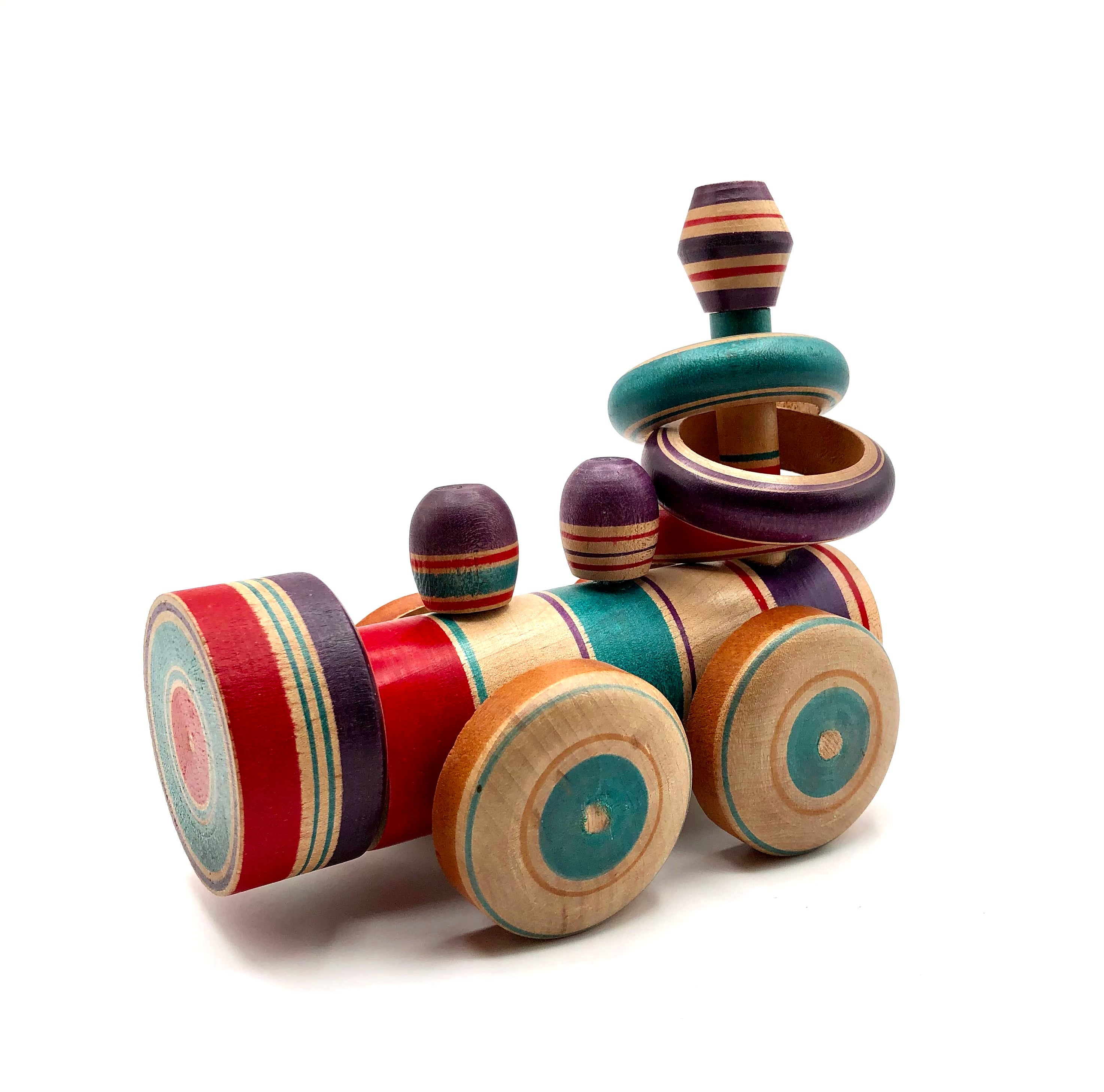
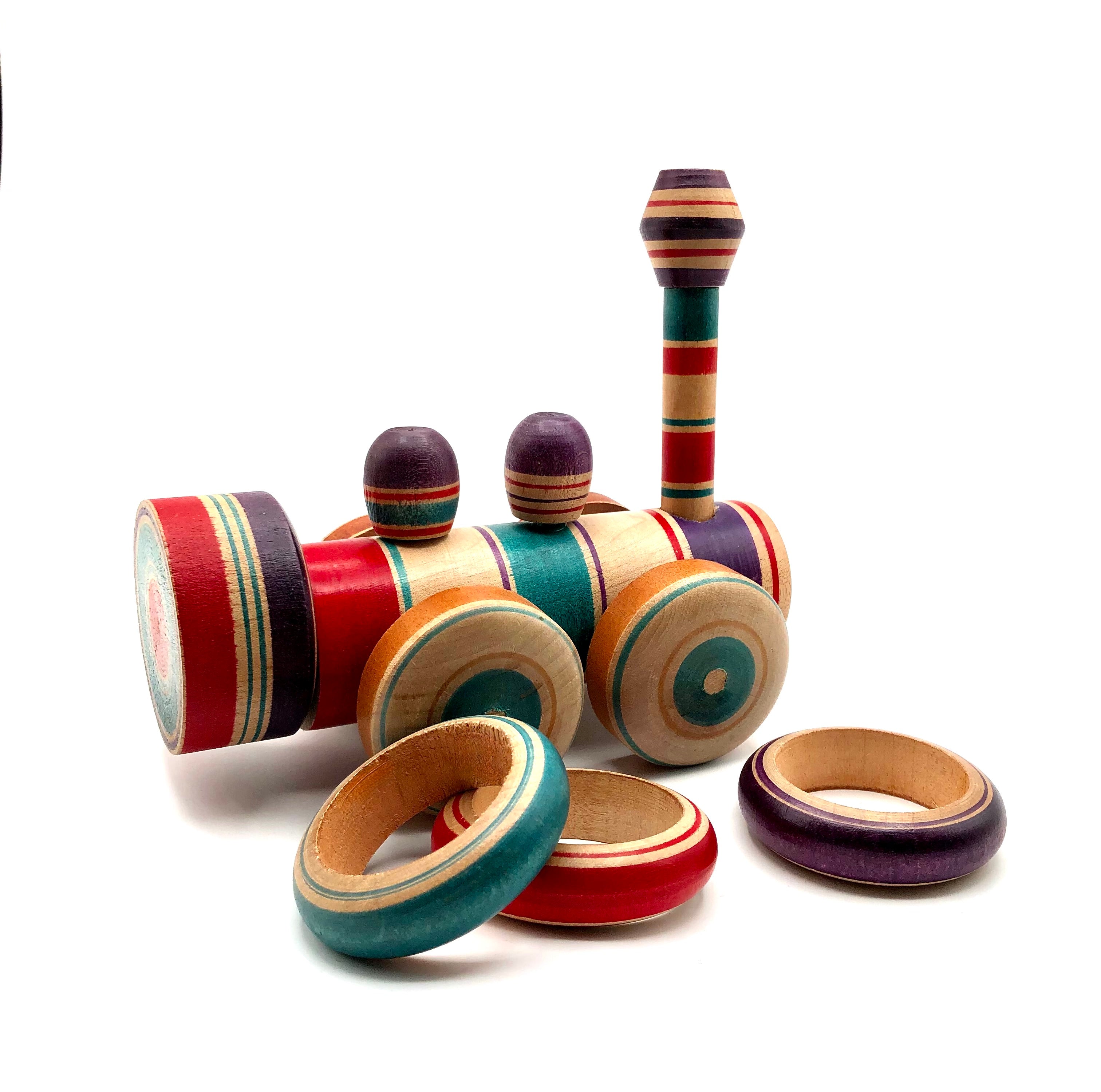
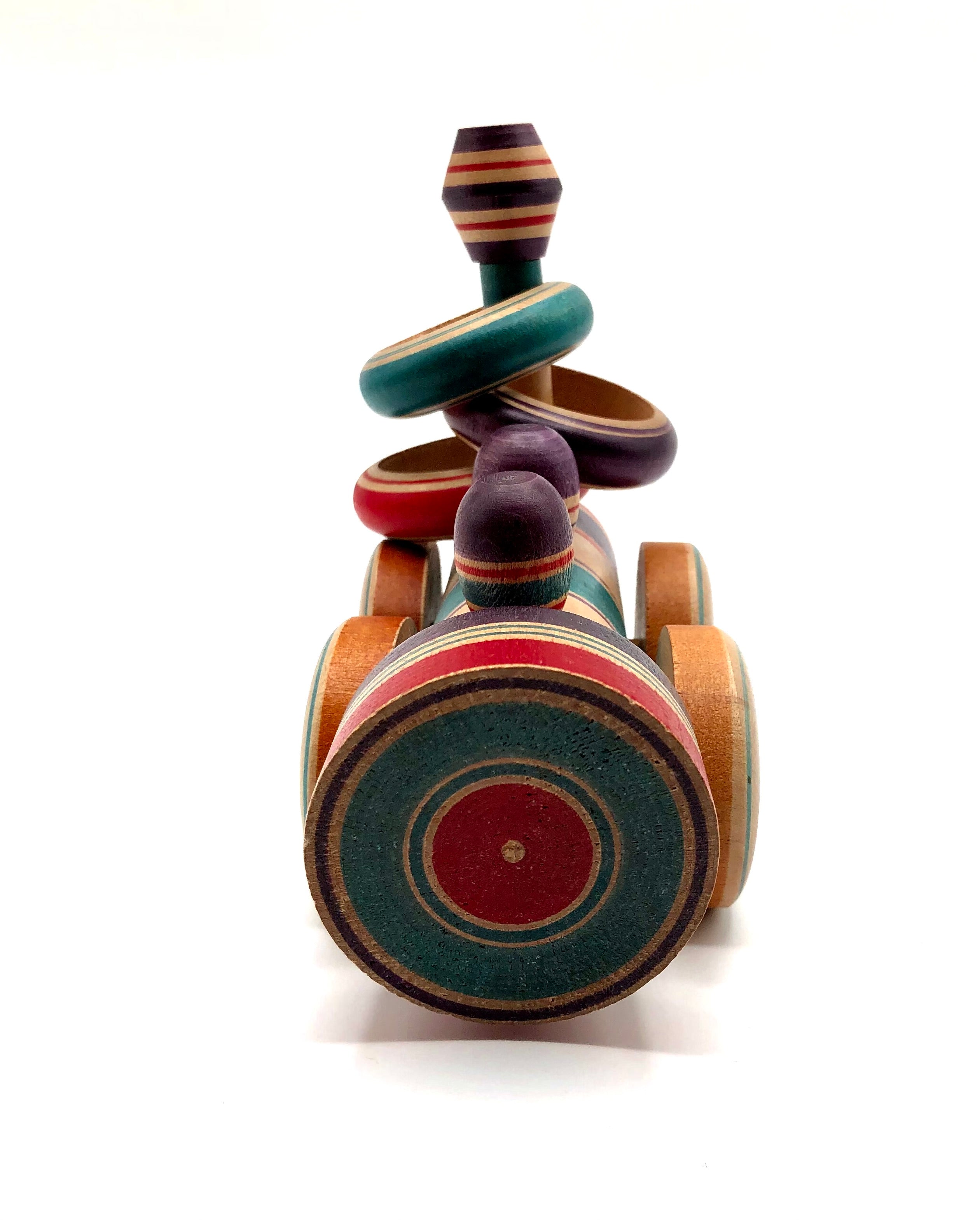
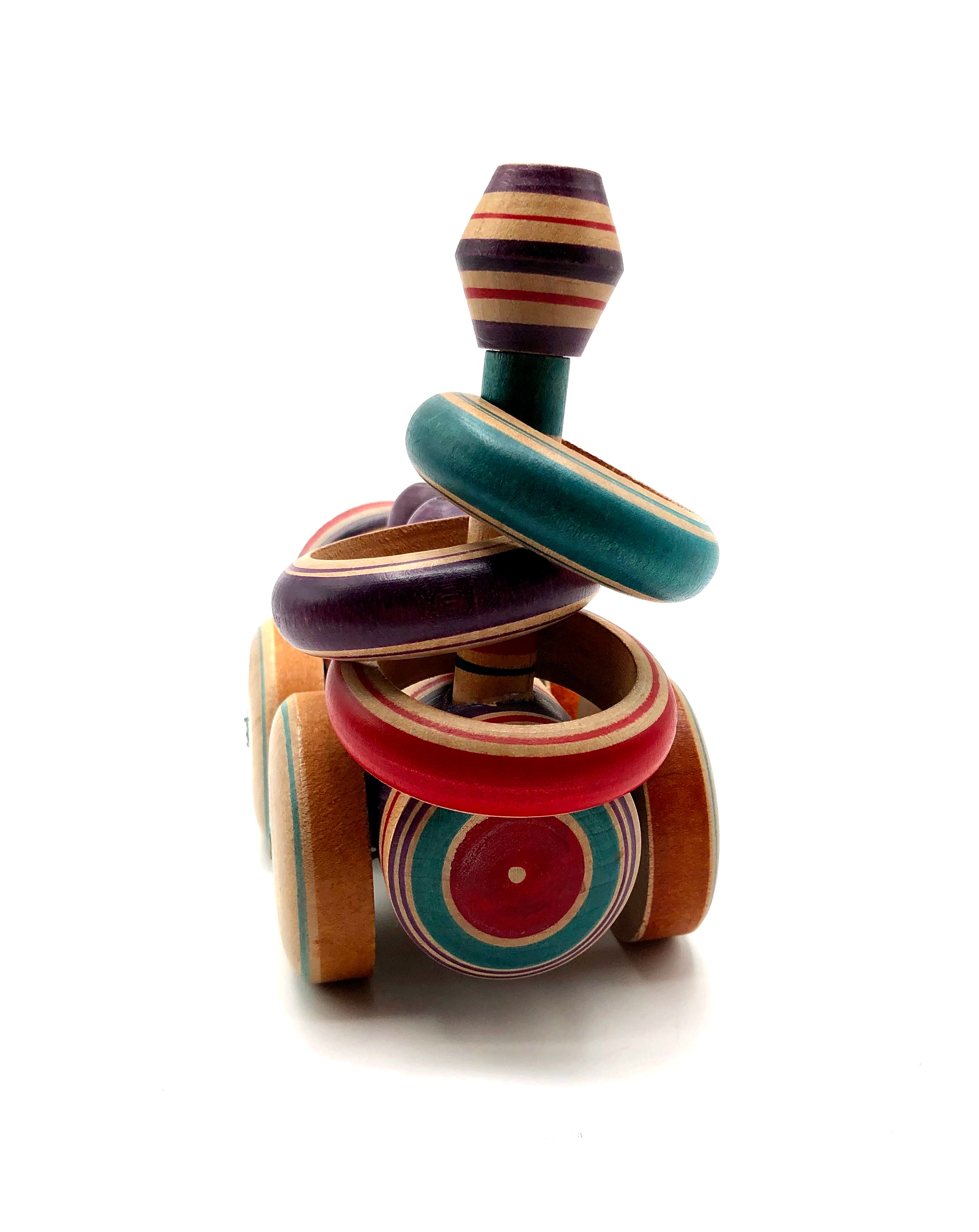
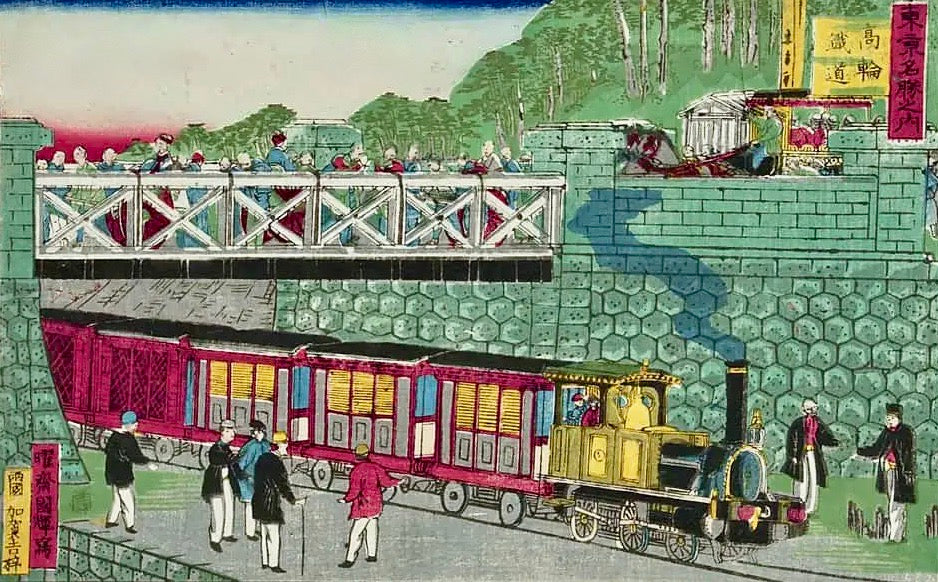
Vintage Japanese Yajirou Wheeled Push Ring Toss Toy Train by Tsuta, Fumio
Dimensions: 5-3/4”h x 3-1/4”w x 6-1/2”l
Lathe-turned wooden toys produced by the Tsuta family was inspired by Kokeshi craftsmen throughout Northern Japan. Toys are among the most oldest toys known to both entertain and educate children. Offered is an unusual, vintage Kijigangu by Tsuta, Fumio son of Tsuta, Mamoru of Tsuta Family of toy makers. Fumio apprenticed under his father and continues to produce toys with the same aesthetic today and inspired by older family members and rooted in nostalgia.
This vintage Yajirou interactive toy train, referred to as a Kisha. It is intricately carved and assembled with all the necessary parts to identify it as a train, (boiler, smoke stack which in this case is the ring tower). The tower is painted in a veritable rainbow of colors, utilizing the Rokoru mono style of decoration using vertical stripes running around the body of the train in the usual colors of red and black to yellow, green, and purple. The piece is unsigned and was sold at the Onagawa Spa in Yamagata and sold as a souvenirs to Japanese families traveling and brought home to their children. NOTE: The pigments used in this doll's creation are not colorfast, so colors may fade if brought into contact with water. The entire figure should be handled carefully at all times as it has been by the previous owner who treasured the works of the Tsuta family.
For further reading about Yajirou-key family go to: https://mingeiarts.com/collections/yajirou-kei-family and https://mingeiarts.com/collections/artisan-interactive-toymaker-tsuta-family-sakuzuo-mamoru-fumio-1892-1944 and https://mingeiarts.com/collections/artisan-interactive-toymaker-tsuta-family-sakuzuo-mamoru-fumio-1892-1944
Condition: Excellent to Good meaning that the piece retains its original craft/workmanship and functions as intended, showing void of damage, cracks, breakage, or repairs with the exception that in spots the quality of painting varies but meets all the standards of the collectible Vintage Traditional Yajirou Kokeshi Toys.
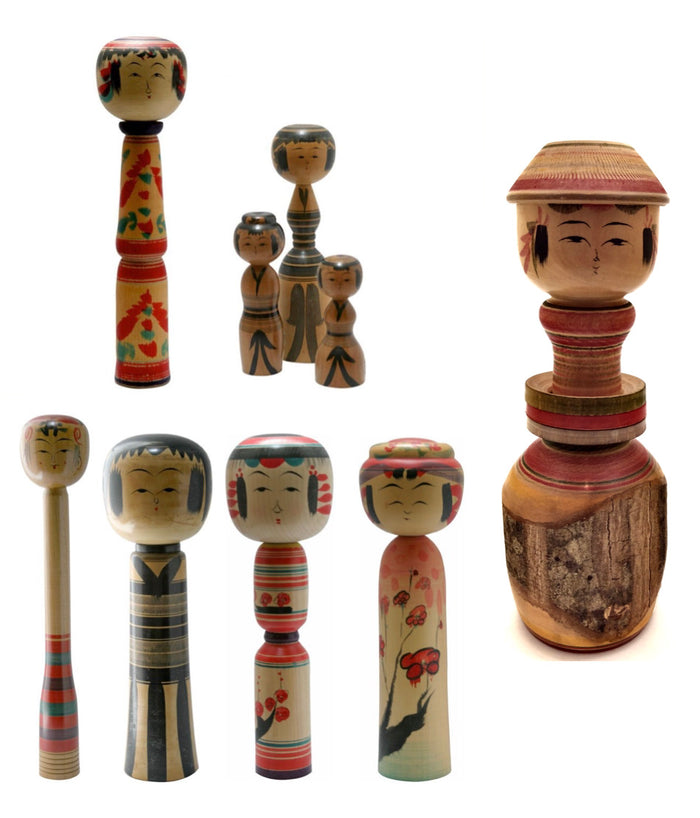
Japanese Traditional Kokeshi
Yajirou-Kei (Family)
Prefecture: Miyagi
Origin:
This strain of Kokeshi is said to have been an offshoot of the Tougatta strain and is far less refined. That eventually developed into a unique style that remains today. The creators of these dolls hail from the small farming village of Yajirou-machi near Kamasaki Onsen, in Miyagi Prefecture, once a farming village between two tall mountains. The Kiji-shi (woodworkers) divided their time between farming and woodcraft. Those who made kokeshi in their spare time sent their wives to the nearby Kamasaki Onsen to sell their work to tourist shops and onsens.
Collector's note – characteristics/painting style:
The majority of this style has distinct waists, or (kubire), where the body tapers inward, with a wider, flared base similar to a kimono, thus making them very stable. The upper body usually has a hand-painted collar with horizontal stripes encircling the body, as in the Rokoru-moyo style, and vertical stripes running below the waist to the base of the doll. However, Yajirou dolls can also be found with a series of chrysanthemum petals running down the front of the body, or a branch of plum blossoms, as the only decoration. Yajirou dolls are some of the most brightly painted of the traditional family group. Utilizing a veritable rainbow of colours, from the usual red and black to green, yellow, and even blue and purple, they are available in probably the widest range of shapes. Some also have a painted beret-like feature or a bun on their heads, similarly painted with a red center spot. Less common are Yajirou who have conical hats known as Suge-Gasa. Typically seen is one lid or double eyelids and a cat or pick-shaped nose. Yajirou kokeshi have been made from cherry wood, camellia, and maple, but the preferred wood is white dogwood, (Mizuki). And finally, both Yajirou and Tougutta dolls are sometimes created with loose rings circling the waists. Carved from the same wood as the body, which is a very meticulous method! This treatment is referred to as 'Yamiyo' style kokeshi.

Leading, Craftsmen:
Niiyama, Keimi, 1925, (Shirabu, Yamagata) - Master Niiyama, Keimi. No additional published information
Niiyama, Fukutaro, 1898-1965 - No additional published information
Niiyama Fukuo, 1922, (Yajiro Shironishi, Miyagi) - Master: Niiyama, Fukutaro. No additional published information
Niiyama, Hisaharu, 1942-2008 - No additional published information
Niiyama, Sanai (Master) - No additional published information
Oizumi, Kiyoni - No additional published information
Saito Masao, 1932, (Shiroishi, Miyagi) - Master: Sato, Tsugio. No additional published information
Sato Tatsuo, 1928-2009, (Yajiro Shiroishi , Miyagi) - Master: Sato, Imasaburo. No additional published information
Sato Yoshiaki, 1936, (Shiroishi Miyagi) - Master: Sato, Tatsuo. No additional published information
Sato, Koichi, 1936, (Shiroishi, Miyagi) - Master:Hamatsu, Heisaburo. No additional published information
Explore & Learn More about Yajirou-Kei (Family)